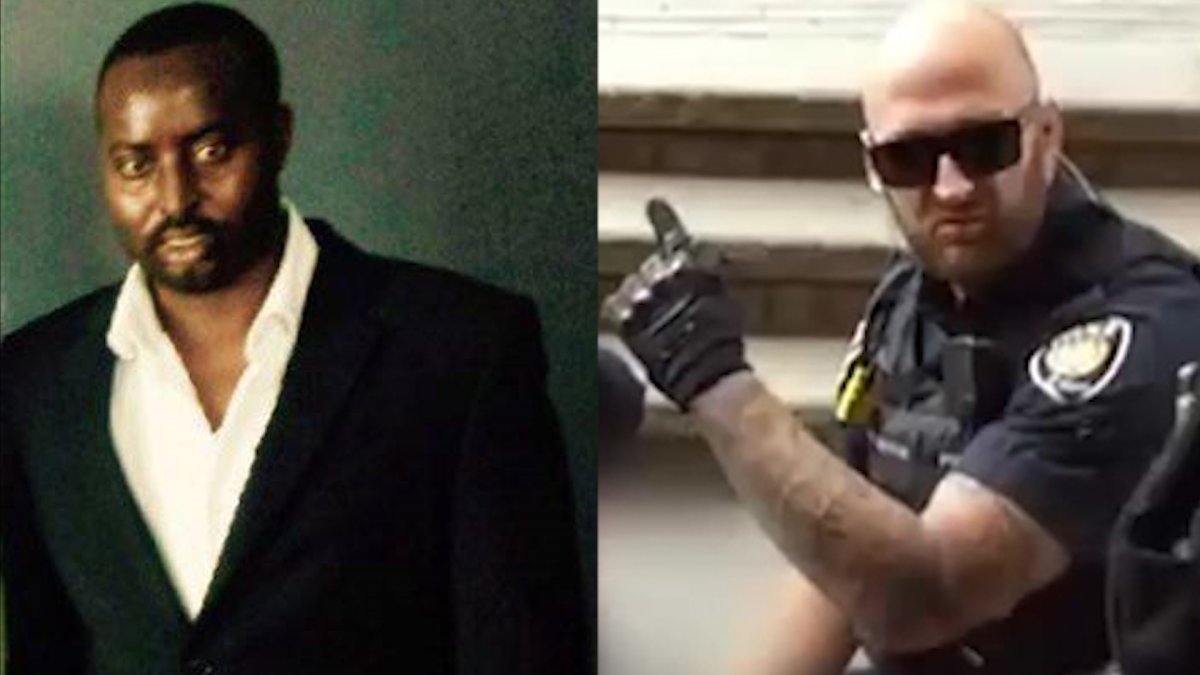The pathologist who conducted the post-mortem examination on Abdirahman Abdi says he “certainly” thinks the facial injuries Abdi sustained during a confrontation with two Ottawa police officers nearly three years ago could have been caused by blows to his face, but he can’t rule out the possibility they were caused in a fall.

Dr. Christopher Milroy’s testimony continued Wednesday in the trial of Const. Daniel Montsion, who has pleaded not guilty to charges of manslaughter, assault and assault with a weapon in connection with Abdi’s death.
Abdi lost vital signs after a violent struggle with Montsion and another police officer outside the front doors of his apartment building at 55 Hilda St. on July 24, 2016. After Montsion arrived, the officers brought him to the ground. Abdi went into cardiac arrest at some point at the scene and was taken to hospital, where he died the next day.
Milroy’s testimony, which began Tuesday, has covered the contents of his post-mortem examination report, which includes his opinions on Abdi’s cause of death, the factors that may have contributed to Abdi’s heart attack and the injuries he documented when he examined Abdi’s body.
The main injuries Abdi sustained on July 24, 2016 were to his face and head, Milroy told the court on Tuesday. On Abdi’s face, the pathologist said he documented some bruising, a laceration on the side of Abdi’s nose, an underlying fracture on both sides of the nose, and bruising and laceration of the lips, as well as an abrasion of the right lower cheek.
In his report, Milroy stated that “the evidence indicates” those injuries occurred from the punches dealt to Abdi’s face by the second police officer to arrive on scene, which was Montsion.
But in court on Wednesday, Milroy said he couldn’t “exclude” the possibility that the same injuries could have been caused by a fall. In that possible scenario, Milroy said, questions that need to be considered are how a person falls and what kind of surface they fall upon — adding it’s up to the court to decide “whether in any fall, the face hit the ground or not.”
“Having considered it all, I certainly think that a punch could cause it,” Milroy said. “I think it is probably less likely that it’s a fall but I can’t exclude it. … The question then is whether you might expect to see other injury, for example, of prominence in the cheek, which was not present.”

Milroy’s report also suggested that the gloves Montsion was wearing during the altercation “would have caused more damage in punching than an uncovered fist.”
Asked by the Crown to explain this statement on Wednesday, Milroy said that, in his experience, the combination of Abdi’s nasal fracture and laceration is “more extensive” than he would expect “from a blow with an uncovered fist.”
Milroy previously told the court he was “shown a pair of gloves of the same make and model” that Montsion was wearing during the incident at a meeting at SIU headquarters in November 2016.
“The gloves that I saw had a hard covering of the knuckles and would therefore deliver more localized force than an uncovered fist would,” the pathologist said Wednesday in court.
The Crown concluded its questioning of Milroy on Wednesday. Trial will resume on Thursday with Milroy’s cross-examination by the defence.
Pathologist elaborates on effects of events that preceded Abdi’s cardiac arrest
In his post-mortem examination report, Milroy determined the primary cause of Abdi’s death to be hypoxic brain damage as a consequence of his cardio-respiratory arrest. He concluded the cause of Abdi’s heart attack was an underlying heart condition and named physical exertion, struggle and facial injuries as contributing factors that brought about the cardiac arrest.
Milroy told the court Tuesday that factors like physical exertion, struggle, pain and emotional stress like fear can increase chemicals in the body called catecholamines, including adrenaline. Increased adrenaline in the body can then “aggravate” or “contribute to” someone going into cardiac arrest, Milroy explained.
Milroy said the struggle and physical exertion Abdi experienced on July 24, 2016 began at a nearby coffee shop in Hintonburg, where the first police officer initially tried to arrest him. Abdi then ran away to 55 Hilda St., where the next struggle occurred.
“But for the physical exertion, struggle and facial injuries Mr. Abdi would not have sustained the heart attack when he did,” Milroy’s report stated.

Under questioning from the Crown on Wednesday, however, Milroy said it’s possible Abdi could have died as a result of the biochemical effects of the struggle and physical exertion alone, before he suffered facial injuries. Experimental data has suggested those biochemical changes can continue for 10 minutes after the height of those triggering factors, or after they’ve ceased, Milroy told the court.
At the same time, he said, the effects of sustaining “more extensive” injuries or facial injuries on their own may be enough to to trigger cardiac arrest.
“From a pathology point of view, I can’t separate them out,” Milroy said.
Milroy later suggested that the “maximal stress event” on Abdi “was taking place in the 10 minute period before he stopped moving.”




Comments